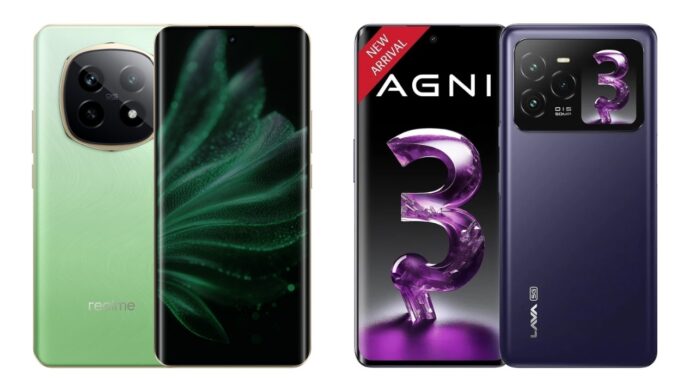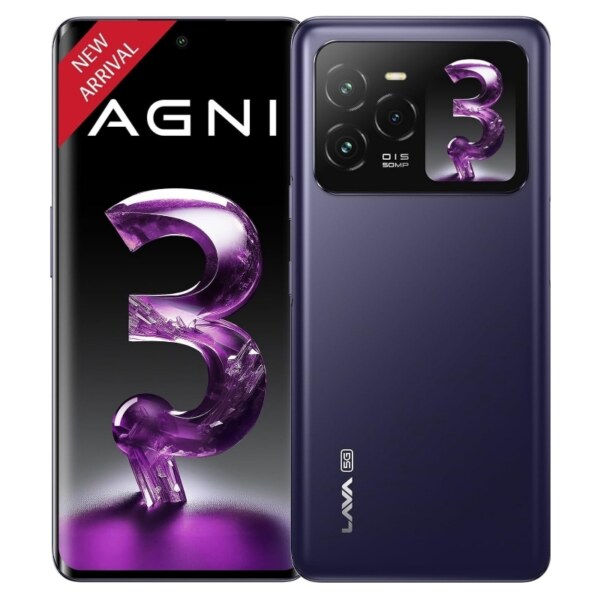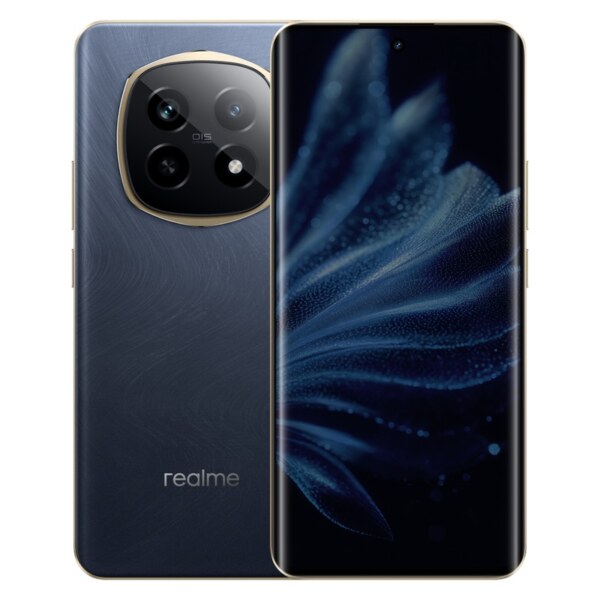Lava announced the launch of Agni 3 5G earlier last week at a price point matching that of the Realme P2 Pro 5G. Both the mid-rangers have a lot to offer but which one of them goes the extra mile to offer consumers something that’s more appealing and bang for the buck? Let’s find that out.
Price
Lava Agni 3 is available in India starting at Rs 20,999 for the 8GB RAM and 128GB storage variant without a charger. The same model with a charger is priced at Rs 22,999. An 8GB + 256GB storage option, which also includes a charger, retails for Rs 24,999.
The realme P2 Pro 5G comes in Parrot Green and Eagle Grey colours and is priced at Rs 21,999 for the 8GB + 128GB model, Rs 24,999 for the 12GB + 256GB model and Rs 27,999 for the 12GB + 512GB model.
Display
The Realme P2 Pro 5G gets a 6.7-inch curved OLED Display with an FHD+ Resolution and offers 10-bit colour depth, 2160Hz PWM dimming, 100% P3 colour gamut coverage, 120Hz refresh rate, 2000 nits peak brightness, Gorilla Glass 7i protection, and 240Hz touch sampling rate. It also has a 20000-level automatic brightness adjustment.
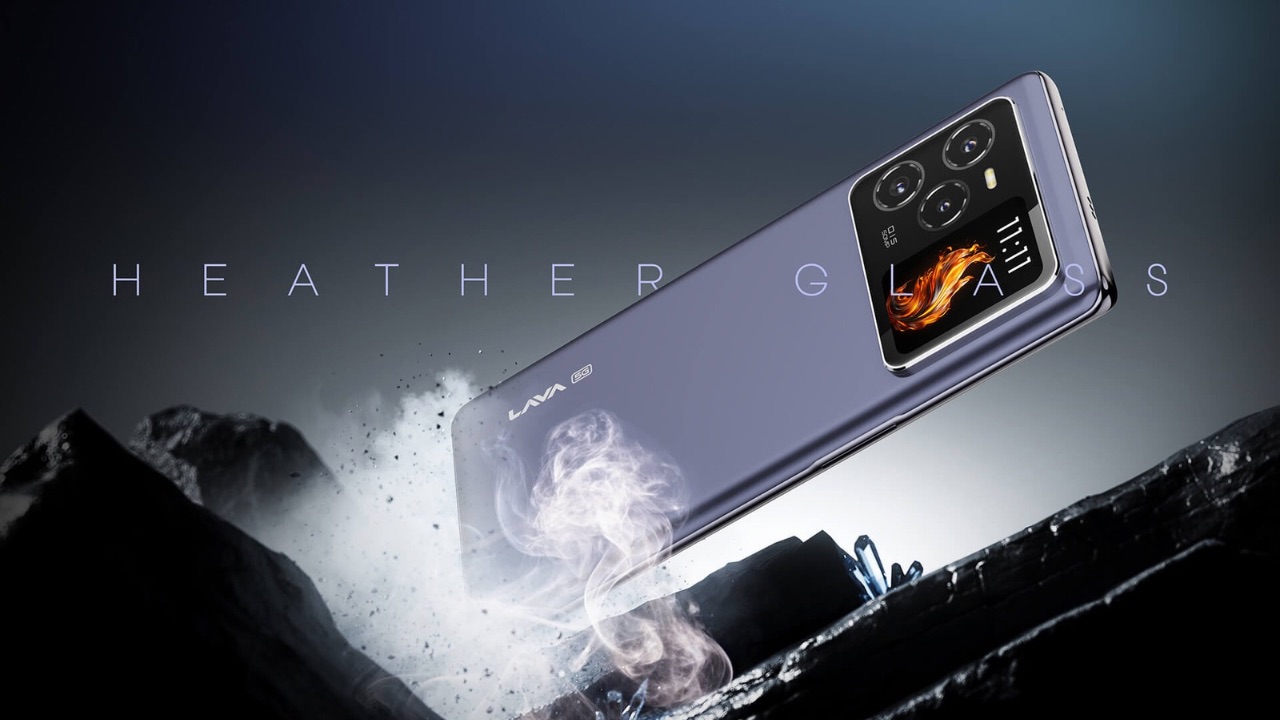
The Lava Agni 3 5G sports a 6.7-inch 1.5K resolution curved AMOLED screen with a 120 Hz Refresh Rate and 1200 nits of peak brightness. The display comes with 1.07 billion colour depth, Widevine L1, and supports HDR 10+. There’s also a secondary display on the back that offers additional features and a unique touch to the device.
Both handsets have a curved AMOLED panel, but Lava’s display is slightly sharper and has a higher resolution, and that secondary display on the back is a plus point. On the other hand, Realme’s display gets stronger protection and higher brightness. It’s up to you whether you want a brighter and stronger panel or one with a higher resolution. In the real world, both of these are capable screens and shouldn’t disappoint you by any means.
Processor
The Agni 3 is powered by the MediaTek Dimensity 7300X SoC, coupled with 8GB of LPDDR5 RAM and up to 256GB of UFS 3.1 onboard storage. On the other hand, Realme’s P2 Pro 5G packs Snapdragon 7s Gen 2 SoC, up to 12GB LPDDR4x RAM, and up to 512GB of UFS 3.1 storage.
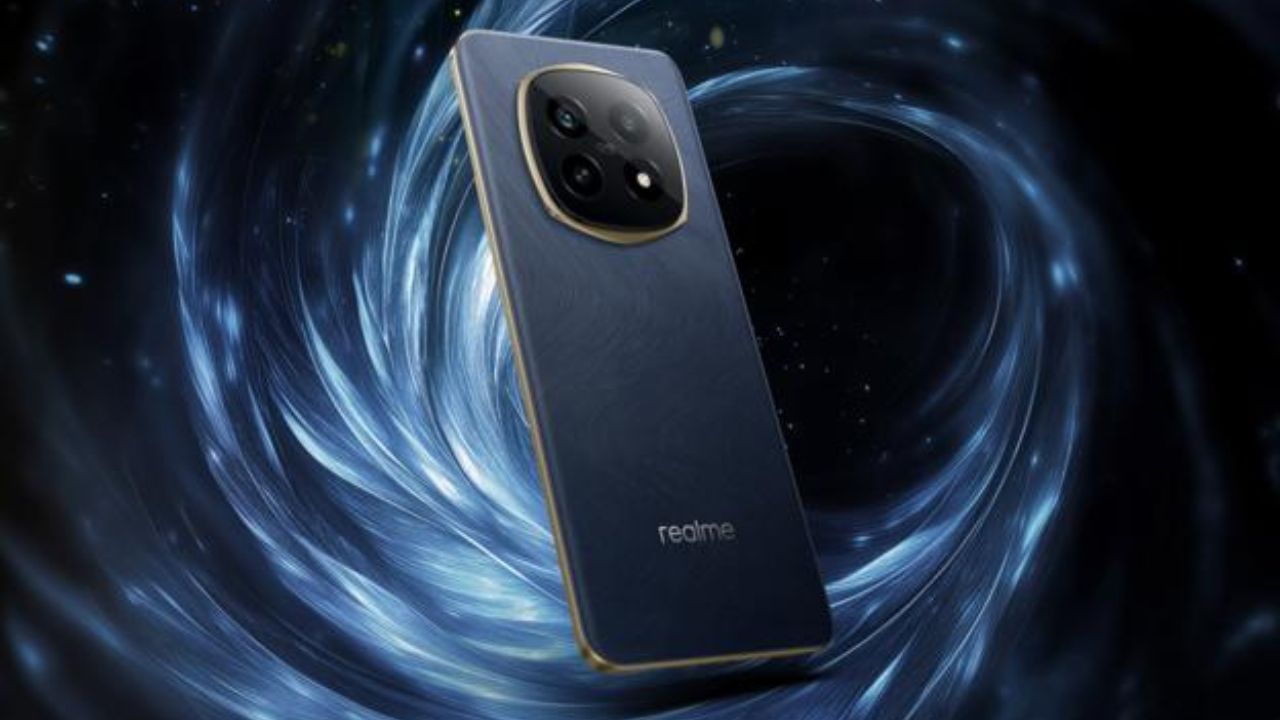
The Agni 3 5G offers users a slightly better Chipset with faster RAM. On the other hand, Realme’s P2 Pro offers more RAM and storage options, which some users may prefer, but they are associated with higher costs as well. As for software, both of them run on Android 14, but we feel Realme UI is more polished than Lava’s Android skin, along with better and smoother animations across the user interface.
Battery and Cameras
For optics, the Lava Agni 3 5G packs a triple-rear camera unit, headlined by a 50-megapixel Sony IMX766 primary lens with OIS, accompanied by an 8MP f/2.2 ultra-wide angle sensor and an 8MP telephoto sensor with 3x optical zoom. For selfies, it features a 16-megapixel sensor at the front. It includes an in-display optical fingerprint scanner for Biometrics and a USB Type-C port for connectivity. It packs a 5,000mAh battery with 66W charging.
The P2 Pro from Realme features a 50MP Sony LYT-600 f/1.8 main camera with OIS and an 8MP f/2.2 ultra-wide sensor. On the front, the smartphone has a 32MP f/2.45 Sony selfie sensor. It also has a 5200mAh battery with support for 80W fast wired charging.
In the camera department, we’ll give the win to Agni 3 5G even though we haven’t used the two devices. That’s because of its additional 8MP telephoto sensor, which helps in better portraits and zoomed shots. On the other hand, Realme P2 Pro wins in the battery segment due to its bigger battery and faster charging speed.
Conclusion
Starting at Rs 20,999 but without a charger, Lava Agni 3 5G looks like a better choice over Realme P2 Pro if you specifically care about that telephoto sensor, the better processor, a secondary display, and the cheaper price tag. However, if you prioritize software, RAM, and battery life, the Realme P2 Pro is a stronger choice. As both devices excel in different areas, we’ll consider this comparison a tie.


